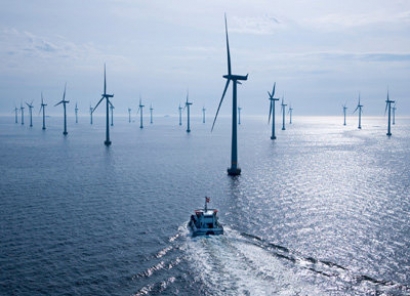
This follows the publication of 2019 data by the G+ Global Offshore Wind Safety Organisation showing an overall rise in reported Drops incidents in the sector. Dropsafe maintains that, rather than focusing Drops prevention exclusively on retroactive on-site mitigation strategies such as secondary securing, Drops risks must be considered throughout the full lifecycle of a wind turbine fleet – from design and manufacture of equipment to installation, operations and maintenance (O&M) and decommissioning.
The G+ 2019 incident data report, released in July, shows that in 2019 there were 92 Drops incidents, representing an increase of 44 percent from 2018. This upward trend has been attributed to improved reporting but underlines the severity of the threat to offshore wind personnel, alongside the reputation and financial standing of businesses in the sector.
High potential (HiPo) incidents decreased compared to the previous year, with 38 percent of Drops incidents classified as high potential in 2019 compared to 61 percent in 2018.
Dropsafe has drawn parallels to the experience of businesses in offshore Oil & Gas, which saw a comparable trend in Drops incidents 20 years ago. The offshore drilling sector subsequently took decisive action to ‘self-regulate’ on Drops risks. Industry working group DROPS was formed to facilitate systematic action on Drops prevention, leading to an advanced, supply chain wide culture of Drops prevention.
In particular, while Drops prevention technologies such as secondary securing, barriers, netting and tool tethering are vital, DROPS advocates a hierarchy of controls that starts with designing equipment and processes in such a way that risks are minimised before these systems need to be installed.
“It’s encouraging to see these statistics being reported and analysed as they show that the wind industry is building a solid foundation in dropped object prevention” said Allen Smith, DROPS Global representative. “As we would expect, the highest proportion of incidents occurred during lifting operations – followed by manual handling and routine maintenance. One of the key things we advise is that dropped object prevention must be considered holistically, using a robust hierarchy of controls. For example, planning work schedules more effectively to minimise the number of lifts would have a big impact and would be a key line of defence.”
Offshore wind sees a similar range of Drops risks to offshore oil and gas. Vibrations from operation, corrosion from sea water and strong winds can cause components to come loose from their fittings and fall, potentially striking assets, vessels or personnel below. Technicians routinely work at height, carrying tools to raised areas.
With the height of turbines and the size of components continuing to grow, Dropsafe warns that the consequences of Drops are scaling up proportionately. According to the G+ data, nearly half of Drops occurred on wind turbines, raising the risk of asset damage which can lead to costly repairs. 8 percent of incidents did in fact cause asset damage.
“Effective Drops prevention needs to encompass the entire supply chain, and has both a mental and physical component” added Mike Rice, Commercial Director, Dropsafe. “Using robustly engineered prevention systems on site is vital, but what we try to foster is a deeper understanding of the hazards from the bottom of an organisation to the top. The offshore wind sector has a major opportunity to take the initiative on Drops by following the open and collaborative approach which has been so successful in Oil & Gas.”
For additional information:
‘The Neglected Hazard’ Drops prevention in the wind industry

